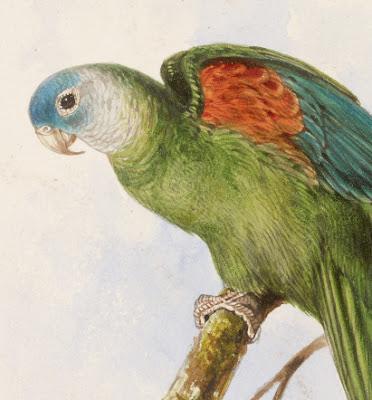
Orange-winged Lorikeet (detail) - Edward Lear (1835-1836)
Graphite and Watercolour, Ashmolean Museum, Oxford
As inspiration for the folio Lear “sketched live specimens and bird skins.” (4) He particularly spent an enormous amount of time at the London Zoo whereby he caught the eye of John Gould, the principal curator and taxidermist. After two years, Lear’s entrepreneurial folio endeavour was a financial failure and it was Gould who took control of the work and sold the remainder of Lear’s lithographic ornithological stock.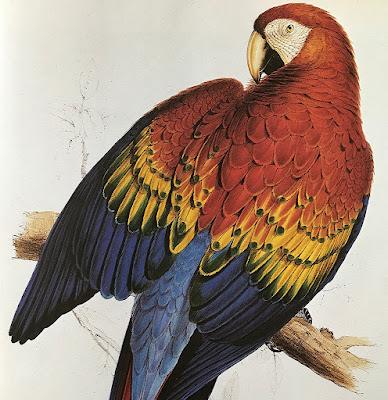
Red and Yellow Maccaw (detail) - Edward Lear (1830-1832)
Illustrations of the Family of Psittacidae, or Parrots
Hand-coloured Lithographic Print, Houghton Library, Harvard
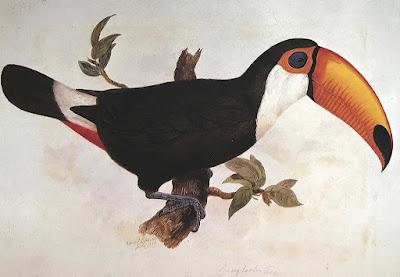
Tocu Toucan (Ramphostos Toco)
as collected by the Earl of Derby (7)
Edward Lear (1836) Watercolour
One visitor attributed Lear’s invitation to the family dinner table not a
nervous, kindly gesture of Lord Derby, but to his grandsons’ insistence
on speeding away from the dining room because it was ‘so much more
amusing downstairs’. Why? ‘Oh, because that young fellow in the
steward’s room who is drawing the birds for you is such good company
and we like to go and hear him talk’ So Lear, allegedly, was summoned
upstairs, to make the adults laugh too. (8)
Lear had extraordinary creative talent. I’ll take leave with a return to Mr Lear’s feathered friends in a form one may be more familiar with, three limericks from A Book of Nonsense:
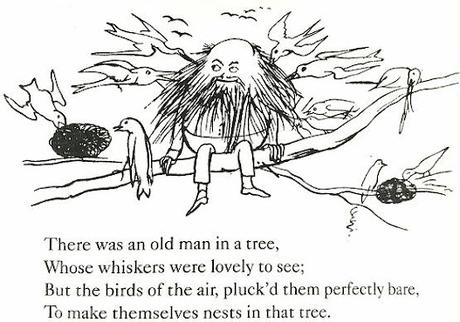
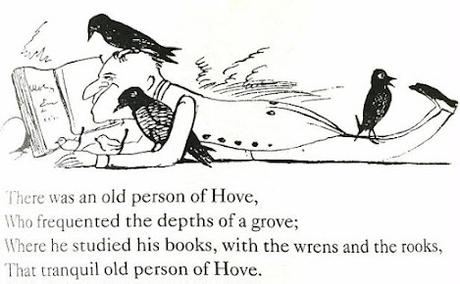
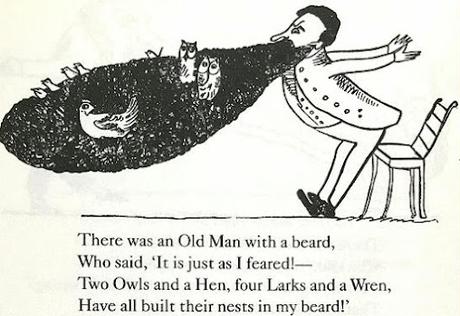
Thank you for reading,Kate J
(1) Higgins, C, 2012. Attenborough’s Treasured Lear bird prints reproduced for Folio Society, The Guardian, 24 October, https://www.theguardian.com/tv-and-radio/2012/oct/24/attenborough-lear-bird-prints-book (Accessed 17 June 2023).
(2) Antiques Boutique, 2023. Edward Lear. https://www.antiquesboutique.com/antique-drawings/edward-lear---superb-set-of-six-hand-coloured-lithographs-of-parrots-/itm113658 (Accessed 19 June).
(3) & (7) Hyman S, 1980. Edward Lear’s Birds, Weidenfeld and Nicolson, London.
(4) Metropolitan Museum, 2023. Eclectus Roratus, https://www.metmuseum.org/art/collection/search/363843 (Accessed 17 June 2023).
(5) Peck, R M, 2016. The Natural History of Edward Lear, David R. Godine, Boston.
(6) Prescot Museum. Edward Lear and Knowsley Hall. https://www.prescotmuseum.org.uk/information/ (Accessed 17 June 2023).
(8) Uglow, J., 2017. Mr Lear A Life of Art and Nonsense, Faber and Faber, London.
Noakes, V., 1991. The Painter Edward Lear, David & Charles, London.
For further information...
Abbott Hall has several watercolours and drawings by Edward Lear created during his tour of Cumberland in 1836.
https://www.mutualart.com/Exhibition/Display---Around-the-Lakes-with-Edward-L/71499EFC72DA084C
The Ashmolean Museum in Oxford has 164 Lear letters, drawings and paintings. You can book an appointment in the print room to get up close and personal. I’ve done this. A very special experience.
https://collections.ashmolean.org/collection/search
The Harvard Houghton Library has thousands of Lear’s original creative works. There are around two hundred natural history sketches, studies and finished paintings with around one hundred bird sketches, watercolours and prints of birds relating to Illustrations of the family of Psittacidae, or parrots (1832).
https://hollisarchives.lib.harvard.edu/repositories/24/resources/3385/digital_only# Email ThisBlogThis!Share to TwitterShare to Facebook
